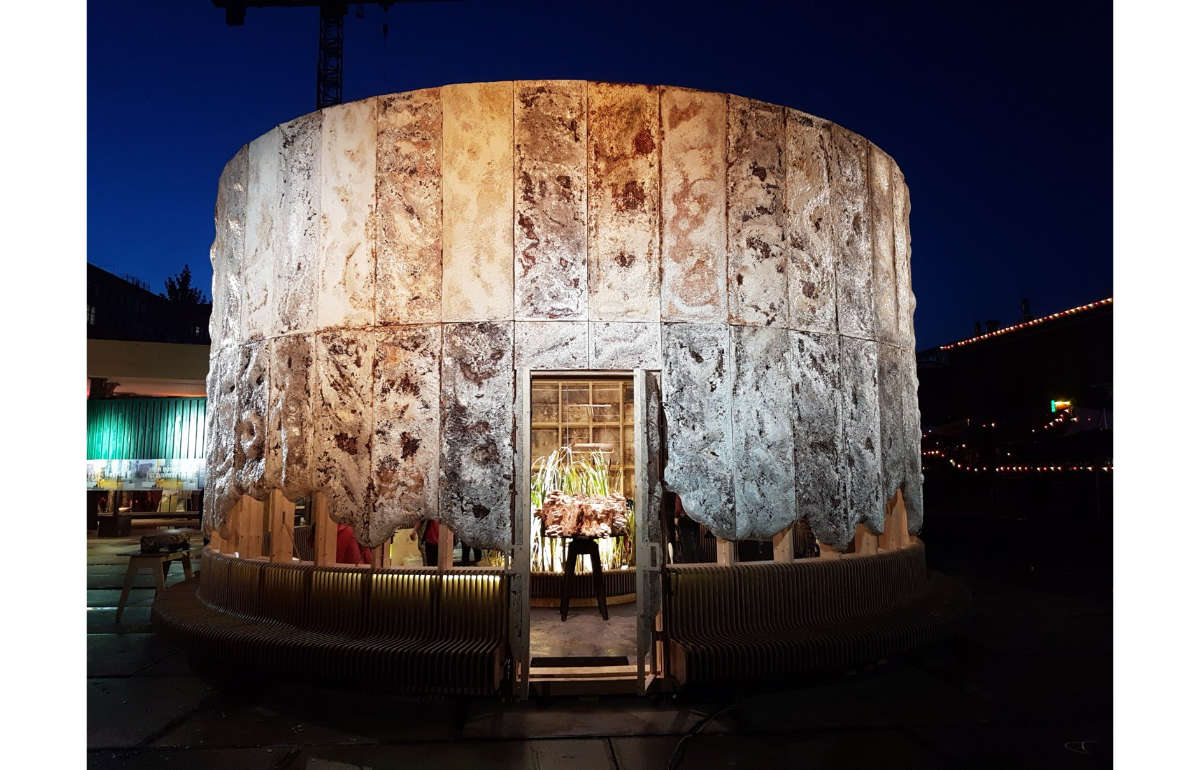FUNGI ARCHIVE
–
pavilions
educational art projects
The Growing Pavilion was part in Dutch Design Week 2019. In ten days more than 75,000 people – industry professionals, governmental figures and organizations but also many “consumers” and regular Dutch Design Week visitors – visited the pavilion. New Heroes’ storytellers gave tours and brought the pavilion to life. Inside the pavilion visitors could also walk through an exhibition that they set up with biobased designers, watch videos and consult the materials atlas. Every day started with a concert, a Growing Music Piece that developed over 10 days. And in order to reinforce the story of The Growing Pavilion, they organized daily harvesting of edible oyster mushrooms that grew from mycelium. Continuous research: As with every project of Biobased Creations of Company New Heroes, The Growing Pavilion was built on many years of research. Which biobased materials are suitable for this iconic structure? What is the aesthetic value of biobased materials? Also: why is it necessary to make the transition to a biobased economy? They have documented and showcased their research process in different ways, aiming for full transparency. Amongst other things, a “Reasons why” animation film, the making of movie and an atlas of all materials used for The Growing Pavilion are available on their website.
“Social challenges such as climate change, subsidence, CO2 emissions and the scarcity of fossil fuels require new, sustainable solutions. That is why we started the experiment of building an iconic biobased pavilion, together with other pioneers in the field, for the Dutch Design Week 2019: The Growing Pavilion.”
Pascal Leboucq, Company New Heroes.
design, science, art, education, pavilion

Hy-Fi by The Living – The Young Architects Program (YAP), is an annual competition hosted by The Museum of Modern Art and MoMA PS1 that fosters innovative architecture. The winning design by The Living was on view at MoMA PS1 during the summer 2014. Hy-Fi, commissioned by the Museum of Modern Art and MoMA PS1, is a circular tower of organic bricks. It offers a captivating experience for the museum and a new paradigm for sustainable architecture. The structure is an extension of the natural Carbon Cycle, with a revolutionary new construction material of mycelium bricks which return to the earth through composting at the end of the structure’s lifecycle. In contrast to typical short-sighted architecture, it is designed to disappear as much as it is designed to appear.
The Living designed a new type of brick through an innovative combination of corn stalk waste and living mushrooms with root-like growth. This organic mixture grows into solid bricks in five days with no added energy. The bricks are lightweight, low cost, and extremely sustainable. When the building was deconstructed, the bricks were composted and the resulting soil was used by local community gardens.
The approach offers a new vision for our society's approach to architecture and physical objects. It also offers a new definition of Local Materials. All of the project’s raw materials, manufacturing, construction, deconstruction, composting, and rebirth as vegetation took place within 200 kilometers.
The Living designed a new type of brick through an innovative combination of corn stalk waste and living mushrooms with root-like growth. This organic mixture grows into solid bricks in five days with no added energy. The bricks are lightweight, low cost, and extremely sustainable. When the building was deconstructed, the bricks were composted and the resulting soil was used by local community gardens.
The approach offers a new vision for our society's approach to architecture and physical objects. It also offers a new definition of Local Materials. All of the project’s raw materials, manufacturing, construction, deconstruction, composting, and rebirth as vegetation took place within 200 kilometers.
art, pavilion, moma
